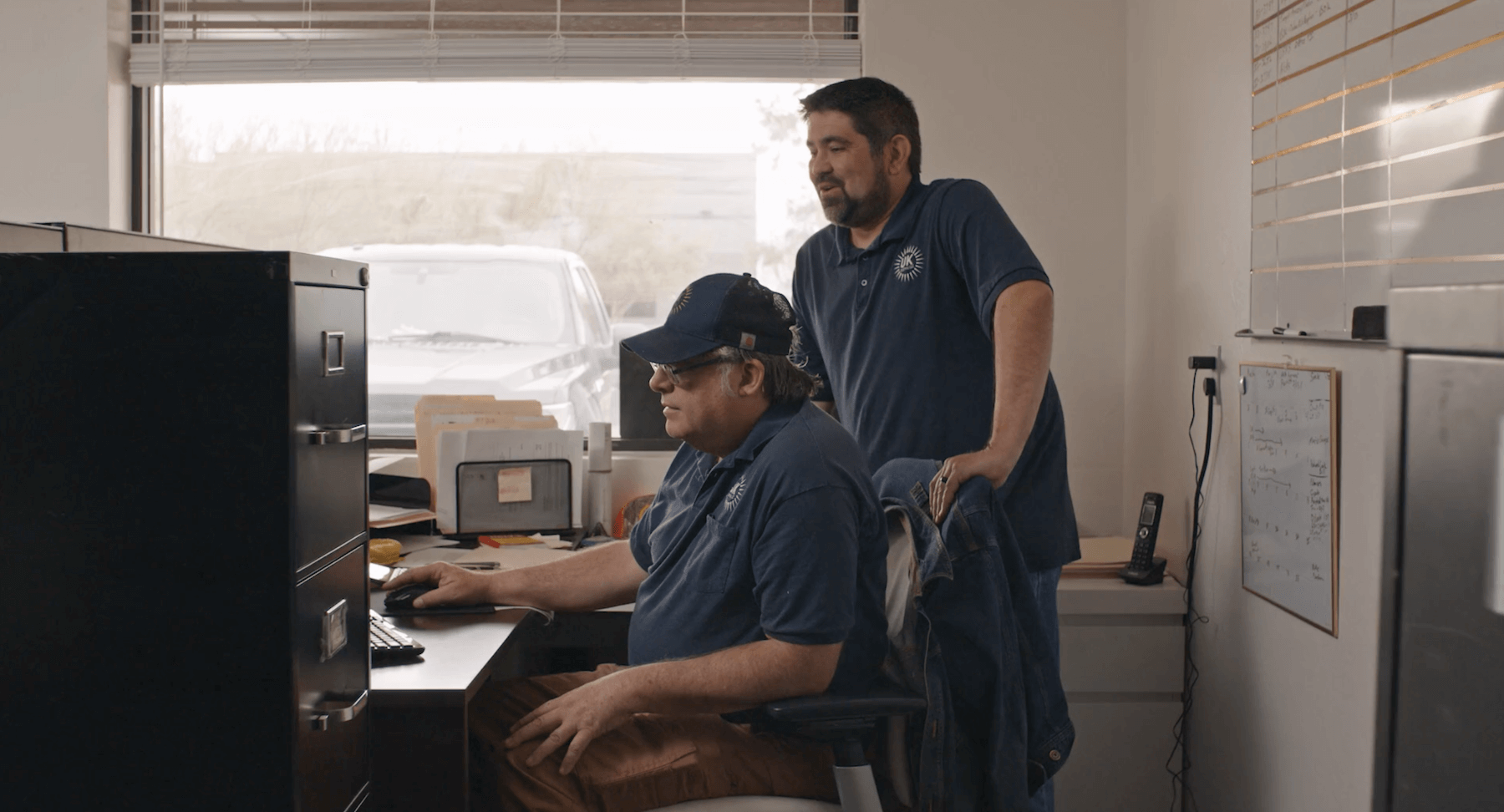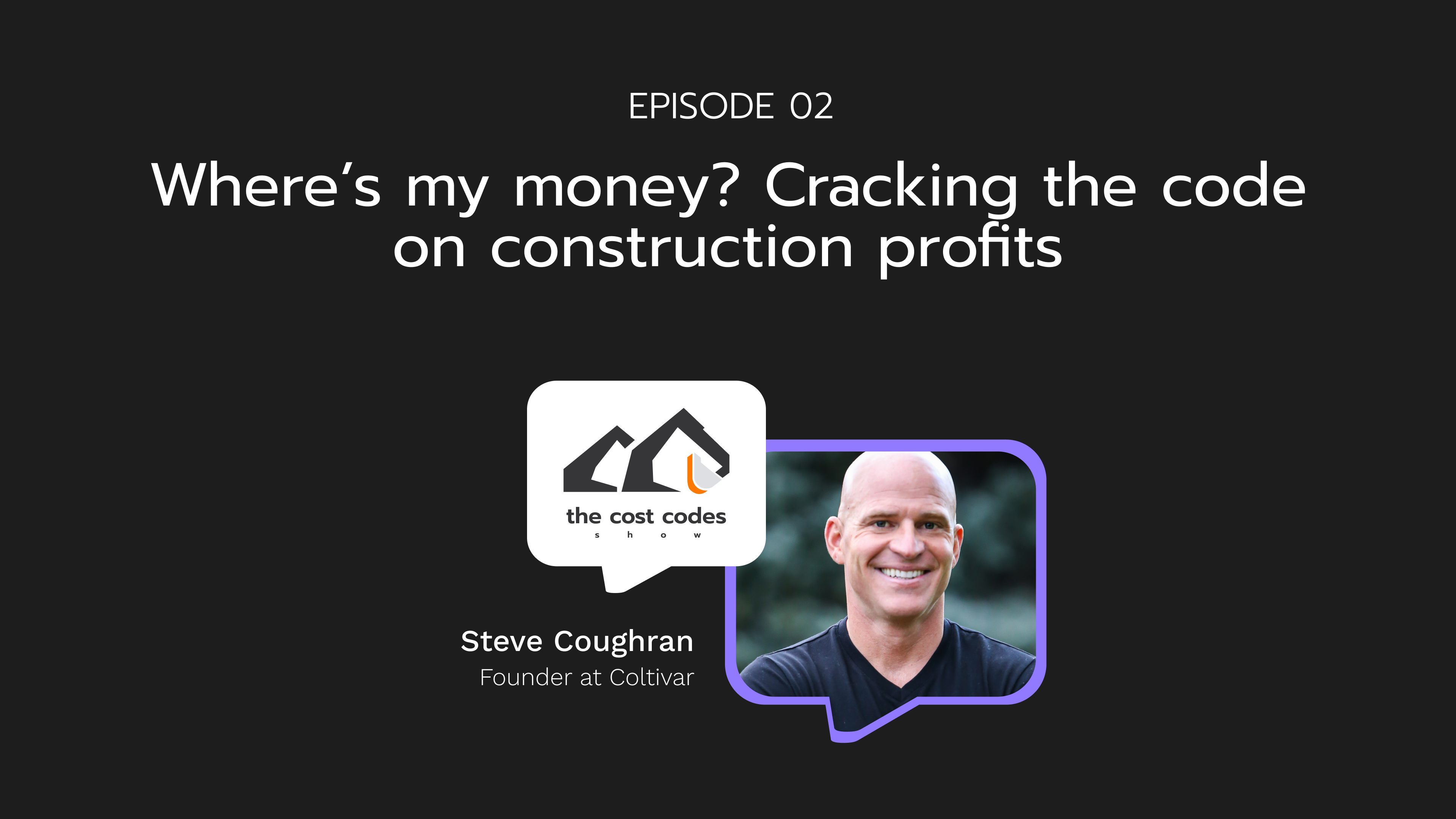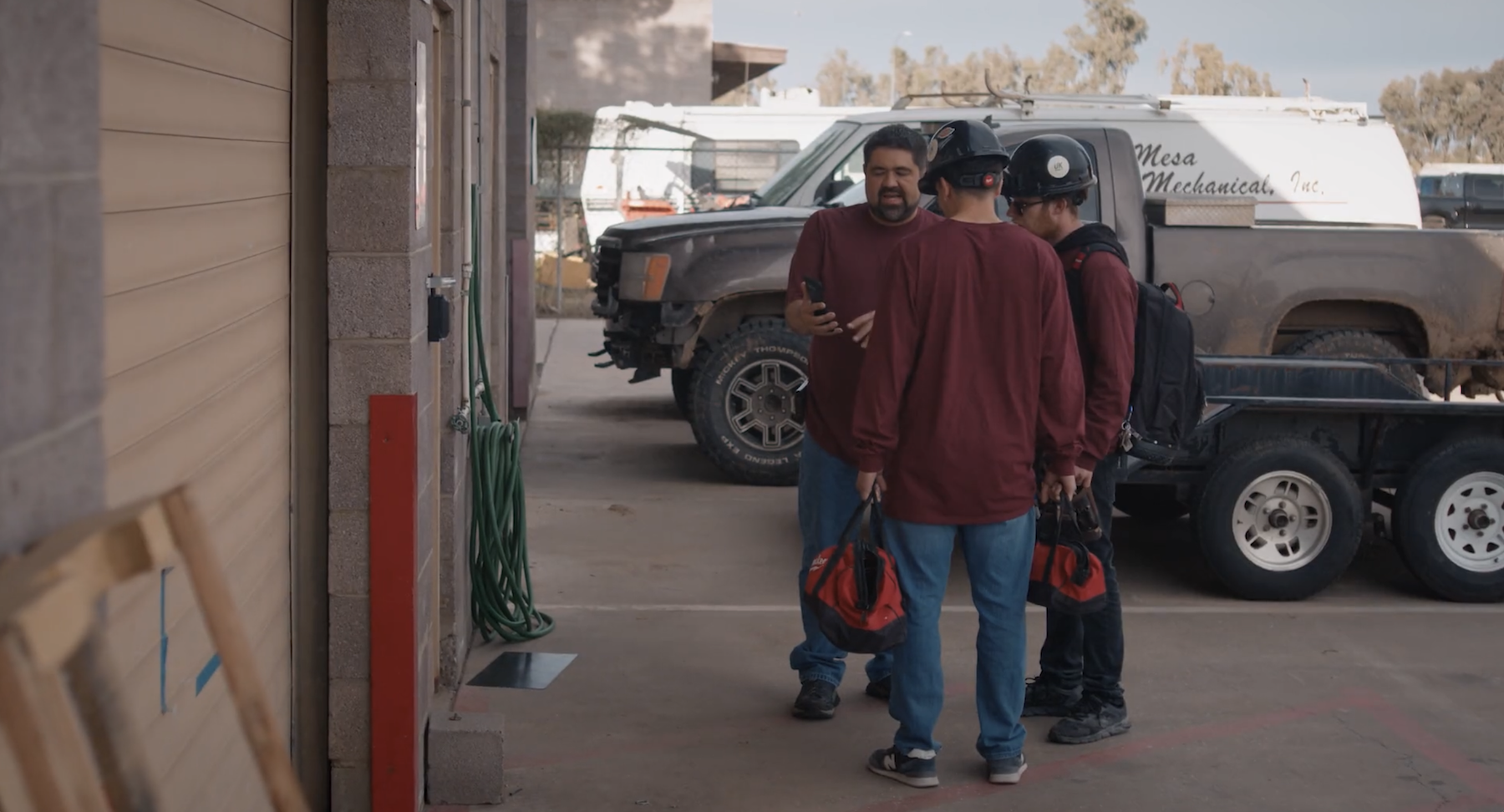The Cost Codes Show — Episode 02: Coltivar
Host: Ryan Gilmore
Guest: Steve Coughran, Founder of Coltivar
Introduction
Ryan Gilmore:
Hello everyone—welcome to The Cost Codes Show, presented by Knowify. This is the podcast where we focus on helping trade contractors run and grow their businesses. Today I’m joined by Steve Coughran, a construction profitability expert and the founder of Coltivar. He has deep experience on the financial side of the industry, and he’s here to share it with us.
How are we doing today, Steve?
Steve Coughran:
Thanks for having me, Ryan.
Ryan Gilmore:
My pleasure. For those who aren’t familiar with your work, can you give us a bit of background on how you got here?
Background
Steve Coughran:
I’ll give you the short version. I started my first company at 16 out of my sister’s garage—that’s where I got my start in construction. I was doing landscape installations and grew that into a design‑build firm doing several million a year. After that, I went back to school for accounting and finance.
I tried a white‑collar path at Ernst & Young in public accounting and quickly realized I’m more of a creative. Doing the work and filing it away wasn’t fulfilling. Public accounting gave me great experience, but I saw a massive gap between strategy and finance. Executives would talk about growing the business—new geographies, expansions—while finance teams built models and budgets. Those worlds weren’t connecting.
So I left and started Coltivar. Since then I’ve served as CFO for companies ranging from millions to billions in revenue and advised a lot of businesses—especially in construction.
Ryan Gilmore:
Excellent. You’ve been on both sides of the table, which is fantastic. Can you share a moment that changed how you thought about construction finances?
Steve Coughran:
Back in my landscape business, I was in my early 20s running a company doing several million a year with no financial background. Operationally, I knew how to design and build, but I couldn’t really read an income statement. If you’d asked how to influence gross margin, I would’ve guessed. If you’d asked what cash flow was, I might’ve said “the bank balance.”
I operated by sheer grit and made a lot of mistakes. At one point we had to make cuts because I didn’t have a solid strategy and I wasn’t watching the numbers. Having to lay people off due to my own bad leadership was awful. After sitting in a boardroom telling people they were let go because I didn’t understand our finances, I promised myself I’d never let a lack of financial literacy affect someone else’s life—or mine—again.
Ryan Gilmore:
That’s admirable. It’s easy to forget there are people behind the numbers. You took that lesson and applied it.
Common Financial Pitfalls in Construction
Ryan Gilmore:
You advise a lot of construction companies through Coltivar. What’s one financial mistake you see over and over when you first start working with them?
Steve Coughran:
Construction accounting is complicated. In retail or restaurants, a transaction is simple: you pay, you get the product, done. In construction, you might collect money upfront for mobilization, estimate percent‑complete, and track costs across each job—each project is like its own business. The “CEO” of that project is the construction manager or PM.
Many owners struggle with revenue recognition—matching the revenue earned on projects with the timing of the costs. We often record mobilization deposits as revenue in systems like QuickBooks or Viewpoint, then start the work later. The result is timing mismatches: one month looks wildly profitable (invoices booked as revenue, no costs yet); the next month looks terrible (heavy costs, little recognized revenue). Without percentage‑of‑completion and proper revenue recognition, your financials are a mess—and it’s hard to run a business that way.
Ryan Gilmore:
Totally. Even a basic kitchen remodel has complex inputs and outputs compared to most small businesses. The administrative burden is real.
Steve Coughran:
Exactly.
“Know Your Numbers” — What It Really Means
Ryan Gilmore:
This brings us to the big topic: “know your numbers.” What does that mean for a construction business owner from your point of view?
Steve Coughran:
You don’t have to be a back‑office accounting nerd. You do need to understand the story behind the numbers. If you can read the income statement, balance sheet, and cash‑flow statement and tie movements to real drivers, you can make better decisions.
For example, if gross profit has declined three months in a row, ask: is it price, volume, or cost? Dig further: materials okay? Labor efficiency off? Are we consistently bidding 1,000 hours and taking 1,500? That’s when financials translate into changes in the field.
Also, understand how big purchases flow. If you buy a $50,000 skid steer, it doesn’t hit your income statement immediately—it shows up on the balance sheet and through depreciation. Don’t fool yourself into thinking you’re “great” because profit looks fine when cash is tied up in retention or equipment. Profit and cash are different.
Who Owns the Numbers?
Ryan Gilmore:
Are there other reasons contractors struggle to get clear on finances?
Steve Coughran:
A common belief is “accounting owns the numbers.” I once worked with a CEO who said, “The dirt is the deal.” He handed me a soils report and asked if I could read it. I understood pieces but not all the technical details. He said that’s how he feels about financial statements.
My response: if soils were mission‑critical to the business, I’d take a master class and get fluent. Likewise, leaders can’t outsource financial literacy. Everyone should know how their actions affect the financials. You don’t need to know every rule—but you should know, “If I do X, it hits Y line.”
Working With Accounting as a Strategic Partner
Ryan Gilmore:
For leaders who still feel “that’s the accountant’s job,” how can they work more strategically with finance?
Steve Coughran:
Something that’s worked well is a monthly Financial Strategy Review (FSR), alongside project reviews. In the FSR we look at financials and the company strategy: what initiatives are we pursuing, and what adjustments do the numbers suggest?
At first, you might feel lost—terms like EBITDA, working capital, CapEx—it’s like day one in a jiu‑jitsu class. But repetition matters. Show up monthly, ask “basic” questions—What is gross profit? What are the levers?—and you’ll start to understand the story behind the numbers.
The Four Levers of Profitability
Ryan Gilmore:
You talk about the “levers of profitability.” What are they and why do they matter?
Steve Coughran:
There are three levers for gross profit and four for operating profit (profit from core operations):
- Price: what you bid.
- Volume: how much work you sell and put in place.
- Cost of Goods Sold (COGS): materials, labor efficiency, subcontractor buyout, and other direct/indirect job costs.
- Operating Expense (OpEx): overhead: G&A payroll, sales & marketing, occupancy, insurance, etc.
If operating profit is down, start with these four. If gross profit is down, focus on price, volume, and COGS.
Ryan Gilmore:
Each lever feels tangible. Should leaders try to pull all four at once, or focus on one?
Steve Coughran:
Start by benchmarking. On Coltivar’s site we publish trade benchmarks (e.g., electrical at ~7–8% operating margin). Compare your operating profit % to the benchmark to find the gap. Then use our Four Profit Levers Calculator: plug in COGS% and OpEx% from your financials, and it shows how a 1% improvement in any lever impacts your bottom line.
Example: If COGS is 60% (so gross profit is 40%) and OpEx is 35%, operating profit is 5%. In that scenario, a 1% increase in price can drive roughly a 20% improvement in the bottom line; a 1% COGS improvement might lift profit by ~12%; volume ~8%; overhead ~7%. Being specific—“add $10 to a $1,000 bid”—rallies the team better than “raise prices.”
Beware blunt cost‑cutting. I’ve seen companies lay off top performers to reduce payroll, only to watch backlog and sales evaporate because those people drove the work. Cutting costs and chasing volume are often the weakest levers if they’re not tied to strategy. You can work multiple levers, but finish what you start. Get it DONE, not just DON.
Pricing: The Most Powerful Lever
Ryan Gilmore:
Cutting costs feels straightforward, while raising prices is scary. How can contractors get smarter about pricing?
Steve Coughran:
Pricing is usually the top lever. Contractors often beat up suppliers over pennies while ignoring the massive upside of small price moves. Instead of skipping software that could improve the business or squeezing partners who’ll save you on a tight job, look at your value story.
Early on, I priced from my bank account—“$12k feels like a lot; I’ll bid $10k”—and then delivered the same scope at a loss. The shift was selling the dream outcome and proving probability of success and speed to value, while reducing friction of working with you. When value exceeds price, customers buy.
Confidence matters in delivery: “It’s a beautiful design with robust filtration; it’s $70,000 and we can start in three weeks,” lands better than, “It’s higher than I expected; let’s value‑engineer.” You may not think of yourself as a salesperson, but communicating value is part of the job.
Cash Flow Basics
Ryan Gilmore:
Let’s do a lightning round. First: cash flow. Quick tips to manage it better?
Steve Coughran:
Profit isn’t cash. Add back non‑cash items (depreciation/amortization), then focus on two things:
- Working Capital: contract receivables, retention, any inventory, minus accounts payable.
- Capital Expenditures (CapEx): trucks, trailers, equipment, buildings. CapEx doesn’t show up in profit but drains cash.
Aim for asset‑light work when you can. Be smart about CapEx—don’t over‑spec the fleet. On working capital, structure contract terms that support cash: deposits, progress billing, reasonable retention, and fast collections. The jobs you pursue and the terms you accept determine your cash position.
WIP Reports
Ryan Gilmore:
How do WIP reports relate to cash flow, and how should contractors use them day to day?
Steve Coughran:
A proper WIP (work‑in‑progress) shows percent complete, earned revenue, costs to complete, and over/under‑billing. If you’re over‑billed by $500k and have $1M in the bank, realize about half that cash isn’t “yours” yet—it’s a liability until you earn it. Do WIP monthly. It’s work, but without it you’re guessing about profit and cash.
Job Costing as a Feedback Loop
Ryan Gilmore:
Job costing isn’t glamorous, but the value is huge. How should contractors think about it?
Steve Coughran:
If you’re not doing WIP and job costing, you’re flying blind. You need an iterative loop: Bid → Build → Measure → Adjust. Office vs. field battles (“estimating is unrealistic” vs. “the field can’t hit production”) get solved with data.
Job costing reveals patterns: “We’re under‑budgeting anchors and glue by $2,000 every job,” or “Our assumed production rate is 100 sq ft/hour but we achieve 60.” In good times you might get away with guessing; when markets tighten and GCs ask you to cut $7,000, you must know precisely how far you can go without destroying margin. This is where tools like Knowify shine—turning job costing into actionable insight.
One Action This Week
Ryan Gilmore:
Before we let you go: what’s one step an owner can take this week to better understand where their money is going?
Steve Coughran:
Grab our free Cash Flow Blueprint. It breaks cash flow into eight drivers, includes a visual map, and gives a checklist of 5–10 actions per driver plus a 30‑day plan. It’s my gift to help contractors before it’s too late. We publish lots of free tools because we want to help the industry.
Ryan Gilmore:
Thanks, Steve. We’ll link to that—coltivar.com/cashflow—in the show notes.
Before we sign off, tell people a bit about Coltivar in case they want to reach out.
Steve Coughran:
We provide a financial operating system: rolling forecasts, cash visibility, the right KPIs tied to strategy, and a cadence that builds accountability and results. We work with construction and service businesses, and we’re a great fit for companies without a CFO who still need strategic financial leadership.
Ryan Gilmore:
Fantastic. Steve, thanks so much. And thanks to everyone watching or listening. Check the show notes for all the resources Steve mentioned. If you’re looking for help managing your projects or finances, check out Knowify at knowify.com. We’ll be back with another episode of The Cost Codes Show soon. Thanks for tuning in!
 QuickBooks
PricingTraining & support
QuickBooks
PricingTraining & support


